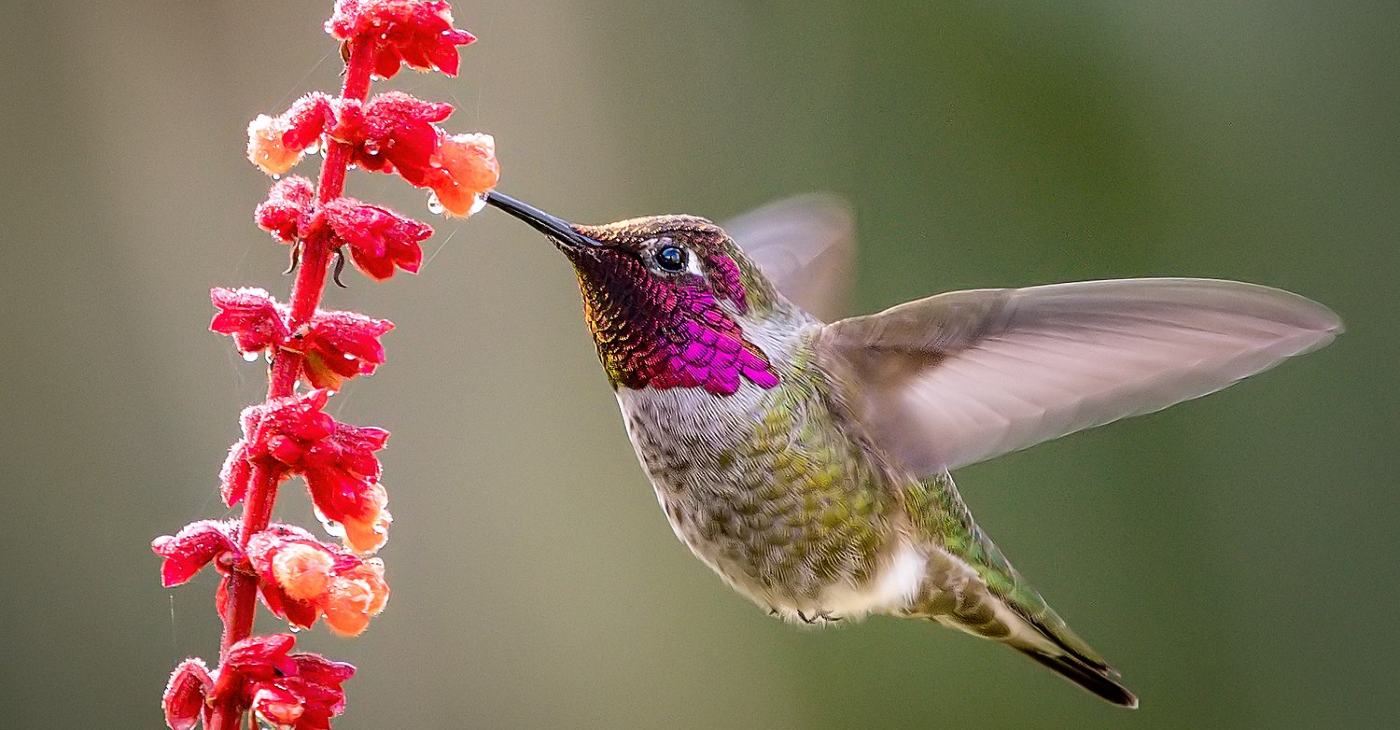
www.goodnewsnetwork.org
‘Like a Beautifully-tuned Instrument’: 2000 Microphones Unlock the Mystery of Why Hummingbirds Hum
Research at Eindhoven University of Technology have been observing how hummingbirds hum—and it could make computers quieter
Culture & Entertainment
The hummingbird is named after its pleasant humming sound when it hovers in front of flowers to feed. But only now has it become clear how the wing generates the hummingbird’s namesake sound when it is beating rapidly at 40 beats per second.
Researchers from Eindhoven University of Technology, Stanford University, and Sorama meticulously observed hummingbirds using 12 high-speed cameras, six pressure plates, and 2,176 microphones. The team of engineers succeeded in measuring the precise origin of the sound generated by the flapping wings of a flying animal for the first time.
They discovered that the soft and complex feathered wings of hummingbirds generate sound in a fashion similar to how the simpler wings of insect do. The new insights could help make devices like fans and drones quieter.
The hummingbird’s hum originates from the pressure difference between the topside and underside of the wings, which changes both in magnitude and orientation as the wings flap back and forth. These pressure differences over the wing are essential, because they furnish the net aerodynamic force that enables the hummingbird bird to liftoff and hover.
Unlike other species of birds, a hummingbird wing generates a strong upward aerodynamic force during both the downward and upward wing stroke, so twice per wingbeat. Whereas both pressure differences due to the lift and drag force acting on the wing contribute, it turns out that the upward lifting pressure difference is the primary source of the hum.
The difference between whining, humming, and wooshing
Professor David Lentink of Stanford University said, “This is the reason why birds and insects make different sounds. Mosquitoes whine, bees buzz, hummingbirds hum, and larger birds ‘woosh’. Most birds are relatively quiet because they generate most of the lift only once during the wingbeat at the downstroke. Hummingbirds and insects are noisier because they do so twice per wingbeat.”
To arrive at their model, the scientists examined six Anna’s hummingbirds, the most common species around Stanford.
One by one, they had the birds drink sugar water from a fake flower in a special flight chamber. Around the chamber, not visible to the bird, cameras, microphones, and pressure sensors were set up to precisely record each wingbeat while hovering in front of the flower.
























































